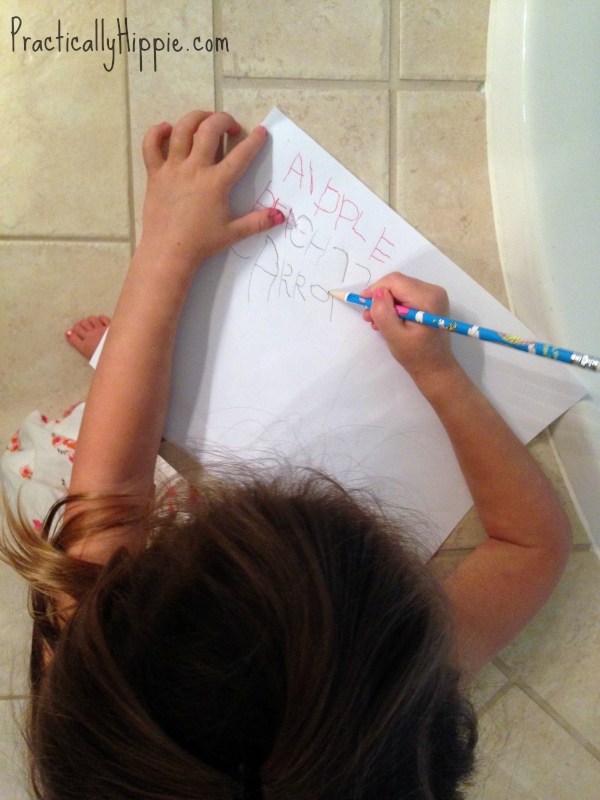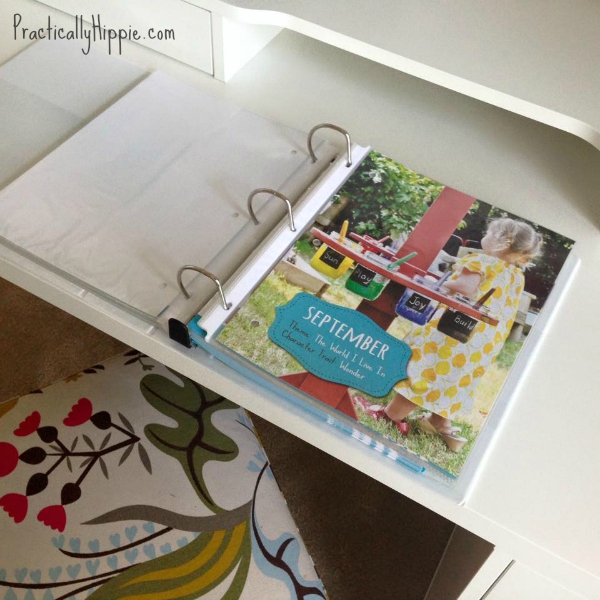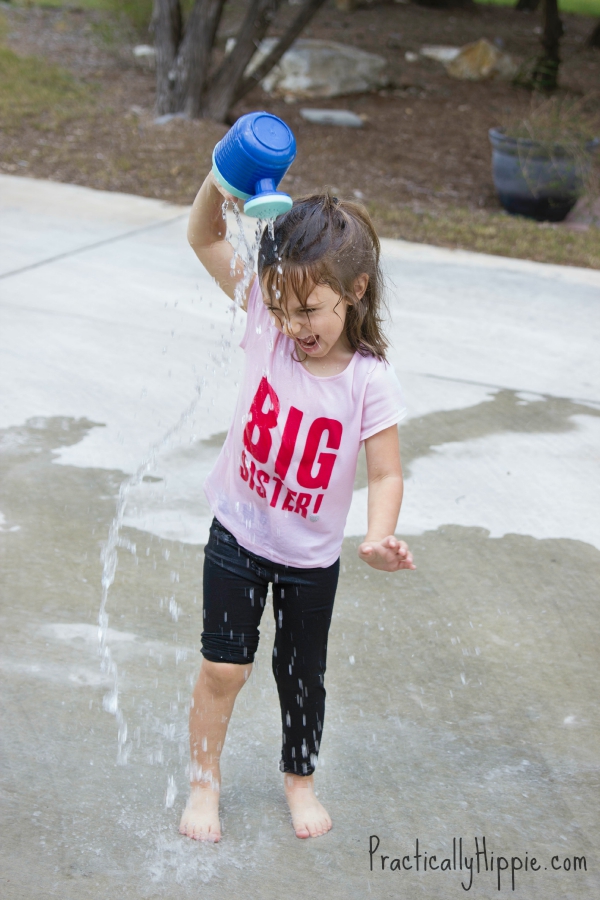I signed my oldest up for Mother’s Day Out when she turned two partly because I needed a break and partly because everyone else was doing it. I toured a few schools and chose a small church school that gave me good vibes. Gabriella went there for a year and a half until I decided to homeschool. By their accounts she did exceptionally well as she is an attentive listener, eager student and performs above her age-level academically. But I knew that something was missing.
I started realizing that when I picked up my daughter from school, she had gained knowledge, but lost her spirit. Her smiles, energy, excitement and spunky personality were all gone. It took hours to bring my daughter back. She had two loving, gentle teachers and a class of friendly peers at a wonderful school, but the classroom setting just did not work for her. Pulling her out of school was an easy decision, but deciding where to go from there was not so clear cut.

Starting out on this homeschooling journey has been overwhelming- there are educational philosophies to follow, curriculum choices to make and co-ops to join. I chose to do Before Five in a Row with Gabriella because I wanted a low-stress, relaxed way to help guide her learning. We enjoyed reading the classic stories together and the themes were great inspiration for doing crafts and activities.
After she turned three, Gabriella developed a keen interest in learning her letters and numbers and by three and a half was able to write her own name and most of the alphabet. We started started working on phonics, math and handwriting along with our Before Five in a Row reading. She loved to “do school” but would get upset when we weren’t sitting together working one-on-one doing a worksheet or planned activity. She would also get extremely frustrated when she wasn’t able to complete projects perfectly or completely grasp a concept we were learning. I took that as a sign that we needed a break and we focused only on reading together for most of the summer.

As kids and parents geared up for back-to-school in September and my daughter turned four, I started to feel some pressure. Up until this point many of my friends kept their kids home or sent them to Mother’s Day Out twice a week, but it seems like four is the age to get serious about preschool.
Several of my friends starting sending their kids three or four times a week and a couple began full-time preschool. A few friends are supplementing preschool with a homeschool curriculum. My homeschooling friends have their preschoolers in weekly academic co-ops. And in addition to academics, I don’t know one person who doesn’t have their preschooler in swim, dance, soccer, T-ball or some type of extracurricular activity.
I started to feel so heavy, weighted down by the doubt of whether I was doing enough for my child. Is she learning enough at home? Am I competent enough to teach her what she needs to learn? How will she compete in the race of life when she’s not getting the same head start her peers are?
When I start doubting myself and the educational approach we’re taking with my daughter, I’m so thankful for my supportive husband who is the first to snap me back to reality. My daughter will be fine. In fact, she will be more than fine because she’s growing up in a loving home with parents who read to her and those two facts will impact her future success way more than anything preschool could teach her.
While it seems like everyone around me is feeling the preschool pressure, there is actually plenty of evidence that for most of the upper middle class families like those in my social circle, preschool isn’t necessary and has no bearing on a child’s future success in school.
Research suggests that preschool only benefits children from disadvantaged families (in particular, families that are below the poverty line, whose mothers are uneducated, or who are racial minorities). This could be because preschool acts as a kind of “equalizer,” ensuring that for at least a few hours a day, these kids get the same high-quality interaction with adults as more advantaged children do, which helps to even the developmental playing field.
– The Early Education Racket, Slate.com
Once I let go of the pressure to focus on academics during preschool, I still wasn’t sure what I did want to focus us. It took a homeschool conference and lots of research to help me land on the focus of our pre-K homeschool year, and here’s what I decided on:
“Play, mostly outside & read great books, every day.”
![]()
I wondered how in the world I would ever come up with enough activities or good books to read, but thankfully, I didn’t have to! I stumbled into a presentation by Kathy Lee from The Homegrown Preschooler at a homeschool conference and bought the book and curriculum before I left. I came away from their booth thinking that this curriculum was Pinterest in a box- all of the fun, exciting things I’d want to do with my kids but never actually get around to doing.

“A Year of Playing Skillfully” is the most beautiful, inspiring curriculum I could have imagined and three weeks into our pre-K year, I have fallen completely in love. It is a play-based, developmental curriculum designed for children ages 3-7 and includes monthly themes and character traits to explore with your child. The curriculum provides opportunities to focus on language and literacy, math and manipulative, science and sensory, art and music, gross motor and outdoor play and social emotional and home life. Each month includes detailed instructions for each activity as well as book lists and supply lists that make it so easy to plan each month while allowing great flexibility for any schedule and any range of ages and stages.
The overarching theme of “The Homegrown Preschooler” and “A Year of Playing Skillfully” is to “say yes.” My neat freak, Type A, plan-ahead personality doesn’t mesh with the “say yes” attitude, but I have realized the power and the fun and the learning that goes with saying yes more. “Can I get in this bucket of water?” “Can I ride my tricycle really far just until I can’t see you anymore?” “Can we read 10 books for bedtime?” “Can I paint my face with a Q-tip and water?” Yes, yes, yes!

Since beginning the curriculum three weeks ago, we’ve done so much. We’ve studied the life cycle of frogs, dived deep into timeless orchestral masterpieces, gained an understanding of the globe and the elements that make up our world, learned the rules of baseball and finished our first chapter book. We’re also on the brink of Gabriella learning to read, almost all on her own, which is exciting. We’ve done all of this without sitting down at a desk to learn, without any struggles, without frustrations and without any stress. We’re spending hours and hours outside playing each day and reading together more than ever before.
Life is messier, crazier, sillier and way more fun when I say yes! Our entire household atmosphere has been transformed. Life is relaxed, rich and engaging and every day we are all exploring new wonders and learning together through books and play. It’s wonderful seeing the world through the eyes of a curious preschooler.
I can’t wait to share our exciting adventures with “A Year of Playing Skillfully” and I’d love to have you follow along!


Wow, what a great post, Meghann. You are such a gifted writer, and I’m glad you’re part of our homeschooling “tribe.” (If it makes you feel better, Kate’s not in any extracurriculars, either–unless you count the signing classes that happen in her home.)
I am very glad I found your site. Do you think The Homegrown Preschooler is enough of an outline for early childhood education at home, or is it important to also buy the (much more expensive) A Year of Playing Skillfully? I have a three year old whom I plan to homeschool, and I would like some structure for our days even now (not because I think kids inherently need it, but because I am a happier and better Mom when I have some idea of what to do with our day).